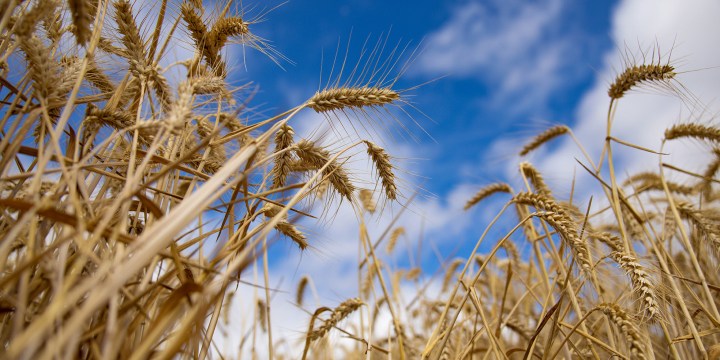SOARING INFLATION ANALYSIS
Cost of living crunch is global, but not all countries are in the same bread basket

As South Africa braces for Wednesday’s national shutdown in protest against the surging cost of living, it is worth noting that this worrying state of affairs is a global phenomenon. Given this context, a march to the Russian embassy would be more appropriate than one to the Union Buildings as Vladimir Putin’s invasion of Ukraine is among the key drivers of global inflation.
Soaring inflation is a worldwide phenomenon and the ANC’s friend in the Kremlin has helped to fan the flames with his invasion of Ukraine, a major grain producer. The global impact is uneven and the poor and working class as always are carrying the heaviest burden, which is hard to bear in the wake of the hardship wreaked by the pandemic.
Food prices have been one driver, literally eating into the limited resources of lower-income households worldwide. The Food Price Index (FPI) calculated monthly by the UN’s Food and Agriculture Organization (FAO) is a key measure in this field. Composed of a basket of the most globally traded commodities that translate into calories, it scaled a record high in March of 159.3 points in the immediate wake of Russia’s thrust into Ukraine.
The index has since been in decline each month and reached an average of 140.9 points in July, down 13.3 points or 8.6% from June. This was its steepest monthly fall since October 2008. The recent UN-brokered deal on Ukrainian grain exports was cited as a key contributing factor.
This hardly means it’s time to break out the increasingly expensive bubbly. Putting food on the table still costs a lot more than it did a year or two ago. In July, the FPI was 16.4 points or 13.1% over its level the same month last year.
Record food prices
“Record high food prices have triggered a global crisis that will drive millions more into extreme poverty, magnifying hunger and malnutrition, while threatening to erase hard-won gains in development,” the World Bank warned last week.
“Domestic food price inflation remains high around the world. Information from between April and July 2022 shows high inflation in almost all low- and middle-income countries; 92.9% of low-income countries, 92.7% of lower-middle-income countries, and 89% of upper-middle-income countries have seen inflation levels above 5%, with many experiencing double-digit inflation. The share of high-income countries with high inflation has also increased sharply, with about 83.3% experiencing high food price inflation,” the Washington-based lender noted.
So inflation is raging basically everywhere.
Pointedly, Putin’s war keeps cropping up on this front.
“Following the start of the war in Ukraine, trade-related policies imposed by countries have surged. The global food crisis has been partially made worse by the growing number of food trade restrictions put in place by countries with a goal of increasing domestic supply and reducing prices,” the World Bank said.
Elevated fertiliser prices, which raise production costs, are a significant concern. The World Bank has recommended that countries lift trade restrictions or export bans on fertilisers and apply technologies to make their use more efficient.
Oil
Boiling oil prices have also scalded the global economy. The Brent Crude benchmark rose to more than $120 a barrel in March from under $90 on the eve of the Russian invasion in February, but has since cooled to around $90 a barrel in the face of slowing global economic growth. That’s still quite high compared with where it has been for most of the past decade.
Roaring energy prices are the main reason Citibank shocked the markets this week with a forecast that UK inflation could hit 18% in early 2023. In the US meanwhile, inflation braked slightly in July to 8.5%.
But the US unemployment rate is 3.5% and relatively high inflation is one of the consequences of having so much of your working-age population earning a wage or salary. Putin’s war has also pushed up pump prices in the US, but demand pressures must surely be at play in the world’s largest economy as well.
SA inflation
South Africa, by stark contrast, has an unemployment rate of 33.9% and consumer inflation was running at 7.4% in June, its briskest pace in 13 years. July’s reading will be released at 10am on Wednesday.
Inflation in South Africa is hardly being fired up by demand pressures, which also limits the central bank’s ability to contain it via interest rate hikes. But higher domestic interest rates can help shore up the rand as investors seek “yield” and that in turn brings down the cost of imported goods such as oil which are stoking price pressures.
Domestic food inflation has maintained a steady climb. Food inflation for consumers in South Africa hit 9% in June compared with 7.8% in May, according to the latest Consumer Price Index releases from Stats SA. In April, it was 6.3%.
And while the unemployment rate dipped slightly in the previous quarter, at 33.9% it still means that many of those fortunate enough to earn an income have many mouths to feed. Estimates in the mining sector, for example, from both industry and labour are that its employees generally have anywhere between five to 10 dependants. That multiplies the impact of rising food prices.
It’s little solace to South Africans that the cost of living crisis is a global and not just a domestic affair. But it can give legislators pause for thought on tariffs and the like. South Africa has temporarily suspended tariffs on poultry products to ease price pressures. Other trade barriers could no doubt be revisited and the fuel price levy could also perhaps be trimmed down further on a temporary basis. And maybe Pretoria could drop its pretence of “neutrality” on the Russian-Ukrainian conflict. With friends like Putin, who needs enemies? DM/BM















 Become an Insider
Become an Insider
Comments - Please login in order to comment.